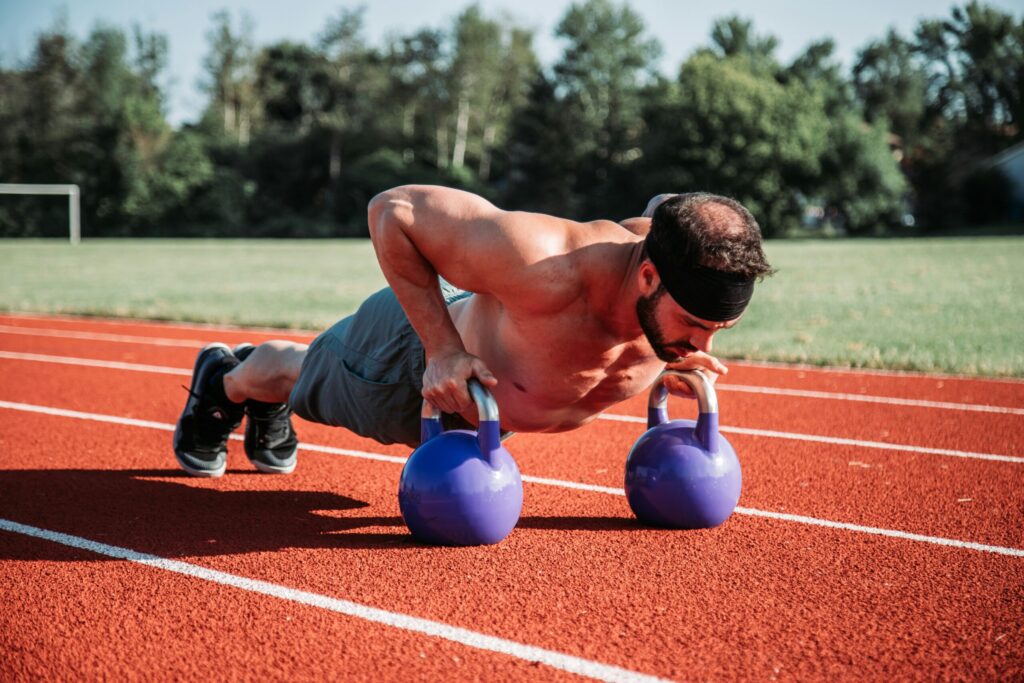Elevating Your Game with Mindfulness Techniques for Athletes

Elevating Your Game with Mindfulness Techniques for Athletes
In the world of athletics, where the difference between victory and defeat can be measured in milliseconds, mental resilience is often as important as physical ability. Athletes constantly push the boundaries of their physical capabilities, yet many overlook a crucial aspect of performance: the power of the mind. It’s fascinating, really—how often do we hear stories of athletes who, despite being physically superior, falter under pressure? This is where mindfulness comes into play, offering a toolkit of techniques to elevate performance and enhance the overall experience of sport.
Understanding Mindfulness
Mindfulness, at its core, is about being present in the moment. It’s about focusing on the here and now rather than getting lost in a whirlwind of thoughts about past failures or future expectations. I remember a conversation with a coach who once told me, “If your mind is a cluttered room, how can you expect to find the tools you need to win?” This simple analogy encapsulates the essence of mindfulness—it’s about clearing that clutter.
Studies have shown that mindfulness can significantly reduce stress, anxiety, and even improve concentration. For athletes, this means being able to focus on the game rather than the noise of the crowd, the pressure of the scoreboard, or the looming expectations of coaches and fans alike. Sounds easy, right? Well, it’s not. But with practice, mindfulness can become a powerful ally.
The Science Behind Mindfulness in Sports
Research into mindfulness in sports has boomed over the last decade. A significant number of studies suggest that athletes who practice mindfulness techniques experience enhanced performance and improved mental health. For instance, a 2015 study published in the journal Psychology of Sport and Exercise found that athletes who engaged in mindfulness practices reported reduced anxiety and improved focus during competitions.
But what does this look like in practice? Imagine an athlete preparing for a race. Instead of succumbing to the pre-race jitters, they take a moment to breathe deeply, grounding themselves in the present. This simple act can shift their focus, allowing them to perform at their peak. It’s a bit like the difference between driving with a heavy foot on the gas pedal and navigating a winding road with finesse—mindfulness helps you find that balance.
Mindfulness Techniques to Elevate Performance
Now, let’s dive into some practical mindfulness techniques that athletes can implement in their training regimens. These aren’t just buzzwords; they’re actionable strategies that can lead to real improvements in performance.
1. Breathing Exercises
Breathing exercises are perhaps the most accessible form of mindfulness. These can be practiced anywhere—from the locker room to the starting line. A popular technique is the 4-7-8 breathing method:
- Inhale through your nose for a count of 4.
- Hold your breath for a count of 7.
- Exhale slowly through your mouth for a count of 8.
This technique helps to calm the nervous system and bring focus back to the present moment. As one athlete shared with me, “It’s like hitting a reset button. I feel more in control.”
2. Body Scan Meditation
Another effective technique is the body scan meditation, which encourages athletes to connect with their bodies on a deeper level. This is especially useful before competitions to release tension. Here’s a simple way to practice it:
- Find a quiet space and lie down in a comfortable position.
- Close your eyes and take several deep breaths.
- Start by focusing on your toes, noticing any sensations, tension, or relaxation.
- Gradually move your attention up through your feet, legs, torso, arms, and head.
This practice not only promotes relaxation but also helps athletes become more attuned to their bodies, which can be crucial when making split-second decisions during competition.
3. Visualization Techniques
Visualization is a favorite among elite athletes, and for good reason. It’s about creating a mental image of success—seeing yourself executing a perfect jump, scoring a goal, or crossing the finish line ahead of the competition. Visualization helps to build confidence and prepare the mind for actual performance. I once interviewed a former Olympian who told me, “I visualized every possible scenario before I even stepped foot on the track. It was like a mental rehearsal.”
To practice visualization, find a quiet spot, close your eyes, and imagine yourself performing your sport flawlessly. Engage all your senses—what do you hear, see, and feel? This technique can be extremely powerful in reinforcing positive outcomes.
4. Mindful Movement
Mindful movement combines physical activity with mindfulness. Yoga and tai chi are excellent examples, but even a simple jog can be transformed into a mindfulness practice. Focus on the rhythm of your breath, the feel of the ground beneath your feet, and the sounds around you. As one yoga instructor I spoke with put it, “It’s about moving with intention, not just going through the motions.”
Many athletes have reported that incorporating mindful movement into their training has not only improved their physical performance but has also enhanced their enjoyment of the sport.
Incorporating Mindfulness into Training Regimens
Integrating mindfulness into an athlete’s training routine may seem daunting, but it doesn’t have to be. Start small—just a few minutes each day can make a significant difference. Here are some tips for incorporating mindfulness practices into training:
- Set Aside Time: Dedicate a few minutes before or after training sessions for mindfulness. It can be as simple as a breathing exercise or a short visualization.
- Use Technology: There are numerous apps available that guide users through mindfulness exercises. I often hear athletes rave about Headspace and Calm—these can be great tools for beginners.
- Be Consistent: Like any skill, mindfulness requires practice. Aim for consistency rather than perfection. Even on busy days, a few minutes of focused breathing can be beneficial.
It’s also important to note that mindfulness isn’t a one-size-fits-all solution. What works for one athlete may not work for another, so it’s essential to explore different techniques and find what resonates best.
The Role of Coaches in Promoting Mindfulness
Coaches play a pivotal role in fostering a culture of mindfulness within teams. By incorporating mindfulness practices into training sessions, they can help athletes develop mental resilience and improve performance. I recall a coach who began each practice with a brief meditation session, encouraging athletes to center themselves before diving into rigorous drills. This not only set a positive tone but also helped athletes to focus better during practice.
Moreover, coaches can lead by example. When they demonstrate mindfulness in their approach—be it through calm communication, positive reinforcement, or by managing their own stress—they create an environment that supports mental wellness. Some teams even have sports psychologists on staff, which can be a game changer.
Real-World Examples of Mindfulness in Action
The world of sports is not short of examples where mindfulness has made a significant impact. Take, for instance, tennis star Novak Djokovic. He’s been very vocal about how mindfulness and meditation have transformed his game. In an interview, he mentioned, “Meditation allows me to focus on the moment and not get distracted by the noise around me.” This shift in mindset has undoubtedly contributed to his success on the court.
Similarly, the NFL’s Seattle Seahawks have integrated mindfulness practices into their training. Coach Pete Carroll emphasizes the importance of mental conditioning, often incorporating breathing exercises and visualization techniques into practice routines. The results speak for themselves—the Seahawks have been one of the most successful teams in recent years.
Challenges and Misconceptions
While the benefits of mindfulness are clear, there are also challenges and misconceptions that athletes may face. One common misconception is that mindfulness is only for those who are stressed or struggling. In reality, even the most elite athletes can benefit from cultivating mindfulness. It’s about fine-tuning the mind, not just addressing issues.
Another challenge is the misconception that mindfulness is a quick-fix solution. It’s essential to remember that developing a mindful approach takes time and dedication. Some athletes might feel discouraged if they don’t see immediate results. Patience is key here—just like physical training, mental training requires consistent effort.
Conclusion: The Mindful Athlete
As we’ve explored, mindfulness techniques can provide athletes with a significant edge in their performance. By honing the mind and fostering mental resilience, athletes can not only enhance their game but also improve their overall enjoyment of the sport. It’s about creating a holistic approach to training—one that acknowledges the intricate relationship between mind and body.
In a world where the pressure to perform is relentless, the ability to remain present and focused can be the game-changer. So, whether you’re a weekend warrior or an aspiring Olympian, consider integrating mindfulness practices into your routine. After all, it’s not just about the final score; it’s about how you play the game.
As I wrap up, I can’t help but think of a quote by the late basketball coach John Wooden: “Success is peace of mind, which is a direct result of self-satisfaction in knowing you made the effort to become the best of which you are capable.” Mindfulness can help us all strive toward that ideal, one breath at a time.







